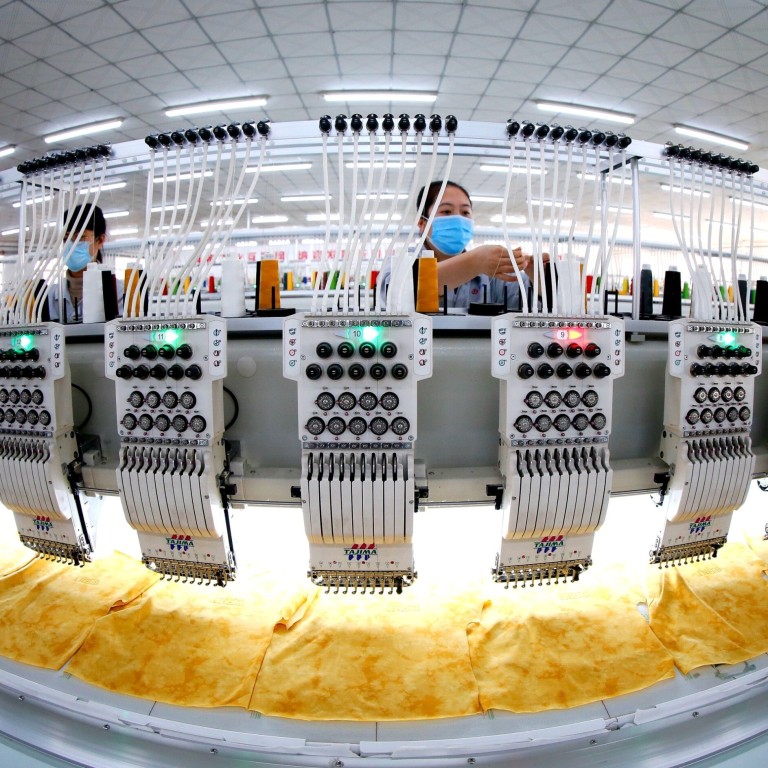
‘Two sessions’ 2021: China is ‘30 years off being a top-tier industrial powerhouse’
- Former industry minister says the country needs to plug huge gaps in basic areas before it can rise to the level of the US or Germany
- Bigger tax cuts and greater financial support also needed to lift manufacturing up the value chain, he says
China will take at least 30 years to become a top manufacturing power like the US or Germany, its former industry minister has said, as Beijing steps up plans to reinforce its industrial foundations and supply chains over the next five years.
Other problems were the foreign stranglehold on critical technology; greater uncertainty in getting access to core technologies and supply chains; and a “premature” decline in manufacturing’s share of the economy.
“In the four tiers of global manufacturing, China is among the third-ranked countries. It will take at least 30 years to achieve the goal of becoming a manufacturing great power,” he said, according to state media reports.
‘Two sessions’ 2021: can China create an ecosystem for tech talent to innovate?
The former minister’s comment about China’s “third-tier” manufacturing strength echoed a report released by a government think tank early this year.
According to data from the United Nations and the central government, China has been the world’s biggest manufacturer since 2010, with 31.3 trillion yuan (US$4.8 trillion) in industrial added value last year. That accounted for nearly 30 per cent of global manufacturing output – or roughly the same as the combined share of the United States, Japan and Germany.
But a State Council Development Research Centre assessment released in mid-January classified mainland China as third tier in its four-tier rankings based on eight indicators, including quality and effectiveness, international competitiveness, environmental friendliness, and innovation.
The US, Germany and Switzerland were in the top tier, while Japan, South Korea, France and Singapore were among the second tier.
The research centre’s report said China lagged particularly in R&D personnel as a share of the labour force and labour productivity in manufacturing.
China fails to meet research spending goal but aims to double efforts in applied research, science minister says
In a separate article, Xu Zhaoyuan, one of the report’s authors, said that in the steel industry, China’s labour productivity was 55 per cent of that in the US. China’s chemical workers were just 11 per cent as productive as their American counterparts, Xu said.
Miao, who is now a vice-chairman of the CPPCC’s economic committee, said that to become a manufacturing great power, China needed to bridge the gap between its industry and science and technology systems; and foster talent in science, technology, engineering and mathematics. It also needed to overhaul its market economy, especially to allow fairer competition, bring down barriers to market access and improve pricing of resources like land and energy.
There should be more generous tax cuts and financing support for the manufacturing sector to encourage innovation, he added.
Before the coronavirus pandemic, China was known as “the world’s factory” but the health crisis disrupted the global supply chain. Meanwhile, China’s services sector has taken over as the country’s leading economic driver, accounting for 54.5 per cent of its economic output last year. The contribution from manufacturing slipped further to 37.8 per cent from 39 per cent in 2019.
“We should emphasise the strategic role and contribution of manufacturing … and stabilise its share of the economy,” Miao said. “We should protect our most comprehensive manufacturing system and upgrade our self-reliance in industry and supply chains.”

